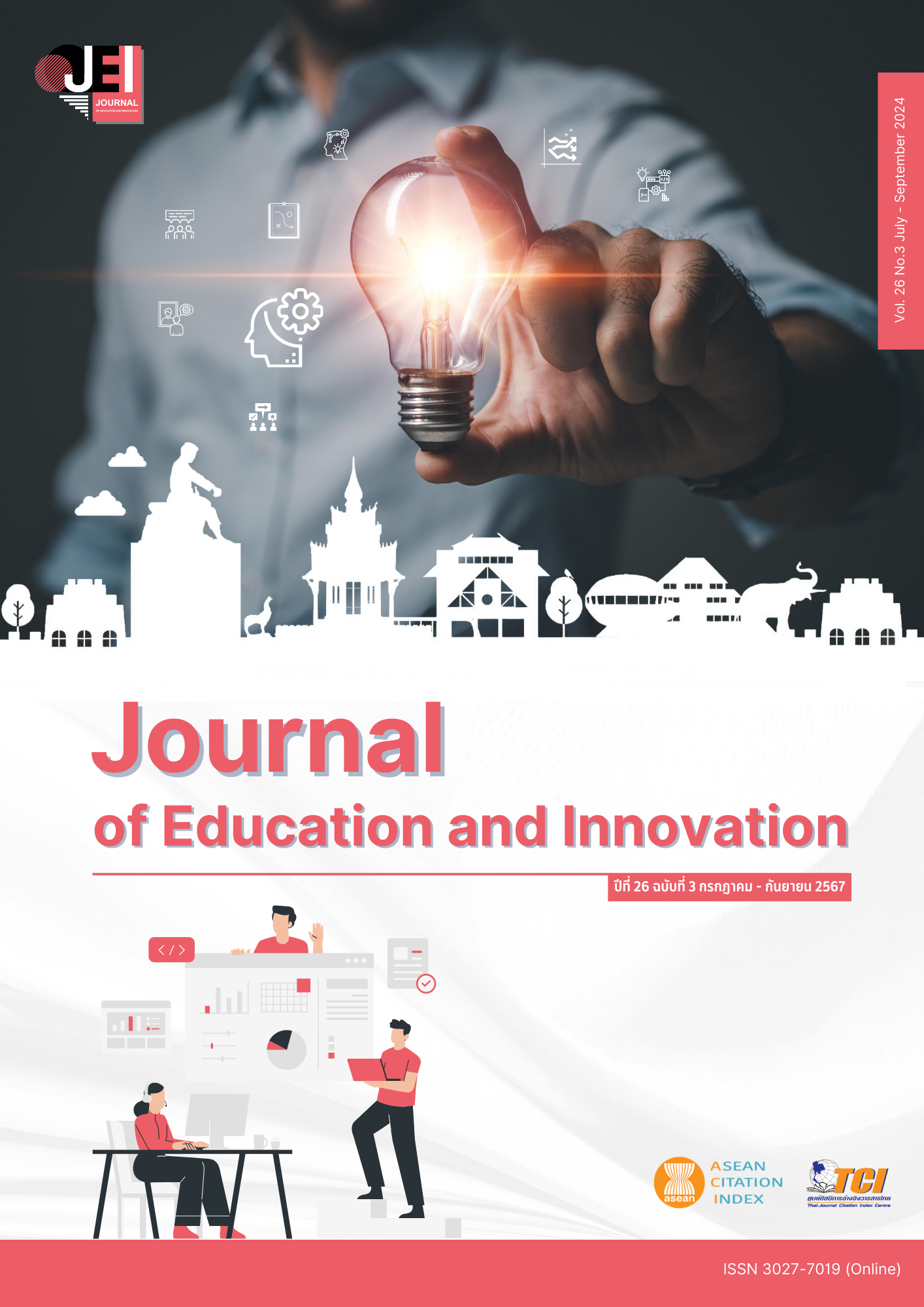ACADEMIC OUTREACH DURING COVID-19 LOCKDOWN AT A UNIVERSITY LEVEL: USING MOOC AS A STRATREGY
Main Article Content
Abstract
The objectives of this research were twofold: 1) to develop an online course on Thai culture as a substitute for physical international inbound student mobility during the COVID-19 pandemic and 2) to implement and assess the online course in terms of media quality, content, and the knowledge and experience gained by the students who participated in the course. This research was an experimental development research consisting of two parts. The first part involved course development, where the researcher created a course curriculum encompassing the rationale, course objectives, learning objectives, and a course description. This curriculum was utilized as a research instrument, with the results reported in a narrative format. The second part focused on course implementation and assessment. The population in this part consisted of students who enrolled in the course. The data were gathered from the overall population. Nevertheless, since course assessment participation was voluntary, this study's informants consisted solely of students who both completed the course and submitted the online assessment form. In turn, a total of 235 foreign students, majority from ASEAN countries responded to the course assessment. The data gathered during this phase were quantitative and subjected to analysis using descriptive statistics including frequency, percentage, mean, and standard deviation. The findings revealed the successful development of an online course, in the form of Massive Online Open Course (MOOC), titled “Business Etiquette in Thailand”. The respondents consistently rated the media quality, content, and knowledge and experience gained as highly satisfactory with most responses indicating “strongly agree” for all components. The most frequently mentioned comment regarding the course was its quality and interesting nature, while the primary suggestion was to offer more courses of a similar nature. The findings of this study contribute to the ongoing exploration of alternative modes of intercultural learning during challenging circumstances for providing to inbound students.
Article Details

This work is licensed under a Creative Commons Attribution-NonCommercial-NoDerivatives 4.0 International License.
The owner of the article does not copy or violate any of its copyright. If any copyright infringement occurs or prosecution, in any case, the Editorial Board is not involved in all the rights to the owner of the article to be performed.
References
Altbach, P. G. (2020). The impact of the COVID-19 pandemic on international higher education. Prospects, 49, 1-6.
Beqiri, M., & Ramaj, B. (2021). Exchange Programs: Enhancing Internationalization of Higher Education. International Journal of Innovative Technology and Exploring Engineering (IJITEE), 10(9), 3047-3051.
Dowsett, B. (2023). Understanding the Main Types of R&D. Retrieved 1 May, 2023, from
https://www.taxcloud.ie/blog/2023/understanding-the-main-types-of-rd
edX. (2023). About MOOCs. Retrieved March 15, 2023, from https://www.mooc.org/
European Commission. (2023). Mobility and cooperation. Retrieved 15 March, 2023, from https://education.ec.europa.eu/education-levels/higher-education/inclusive-and-connected-higher-education/mobility-and-cooperation
Fujimoto, T., Takahama, A., Ara, Y., Isshiki, Y., Nakaya, K., & Yamauchi, Y. (2018). Designing a MOOC as an online community to encourage international students to study abroad. Educational Media International, 55(4), 333-346. DOI:10.1080/09523987.2018.1547545
Kelo, M., Marina, B. (2019). The Importance of International Education and Cultural Exchange. Journal of International Students, 9(2), 357-360.
Mason, L. (2021). International Student Mobility Flows and COVID-19 Realities. Research, Evaluation, and Learning Unit, Institute of International Education.
MOOC.org. (2023). About MOOCs. Retrieved 15 March, 2023, from https://www.mooc.org/
OECD. (2015). Frascati manual 2015: Guidelines for collecting and reporting data on research and experimental development. Paris: OECD Publishing.
Sakhieva, R, Ibatullin, R., Biktemirova, M., Valeyeva, G., Pchelina, O., Valeyeva, N., Minsabirova, V., & Khairullina, E. (2015). The Essential, Objective and Functional Characteristics of the Students’ Academic Mobility in Higher Education. Review of European Studies, 7(3), 335-340.
Snow, N. (2021). Student Mobility and Its Relevance to International Relations Theory. Retrieved 10 March, 2023, from https://www.e-ir.info/2021/12/05/student-mobility-and-its-relevance-to-international-relations-theory/
Thailand Board of Investment. (2023). Why invest in Thailand. Thailand's Advantages. Retrieved April 27, 2023, from https://www.boi.go.th/index.php?page=thailand_advantages
Think Pacific. (2018). Student Global Mobility. Retrieved 15 March, 2023, from https://thinkpacific.com/student-global-mobility/
UNESCO. (2015). UNESCO Science: Towards 2030. Paris: UNESCO Publishing.
UNESCO. (2020). UNESCO Institute for Statistics. Retrieved 25 September, 2023, from http://data.uis.unesco.o
Van De Ven, A. H., & Johnson, P. E. (2006). Knowledge for theory and practice. The Academy of Management Review, 31(4), 802-821.
World Bank Group. (2020). Economy Profile Thailand. Doing Business 2020: Comparing Business Regulation in 190 Economies. Retrieved February 15, 2023, from https://www.doingbusiness.org/content/dam/doingBusiness/country/t/thailand/THA.pdf


